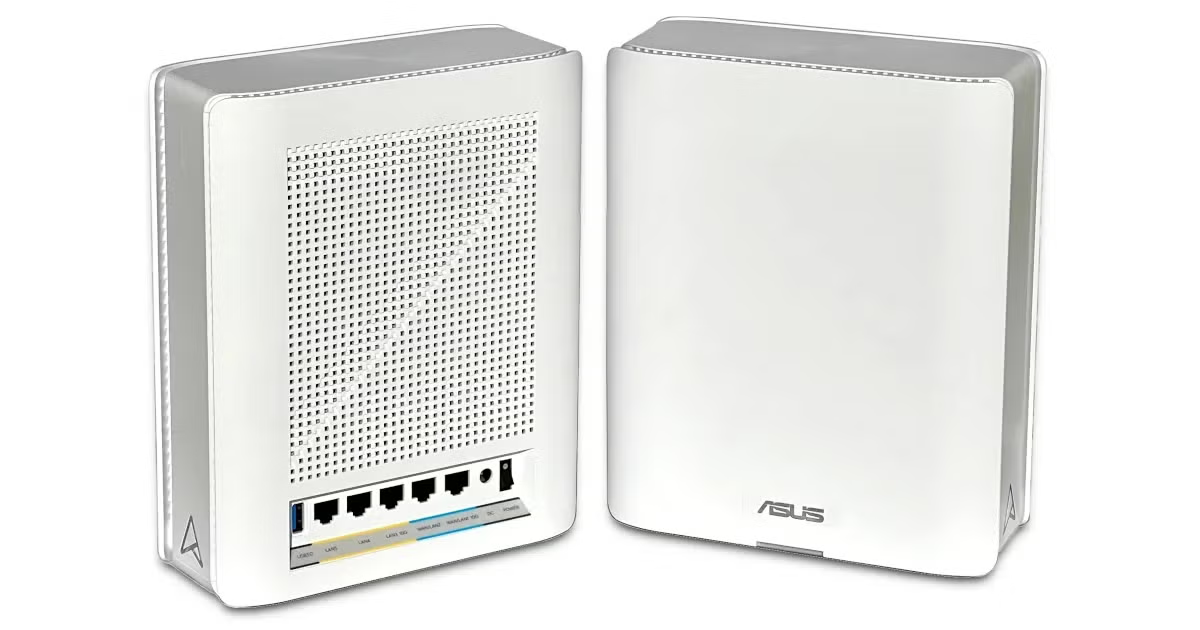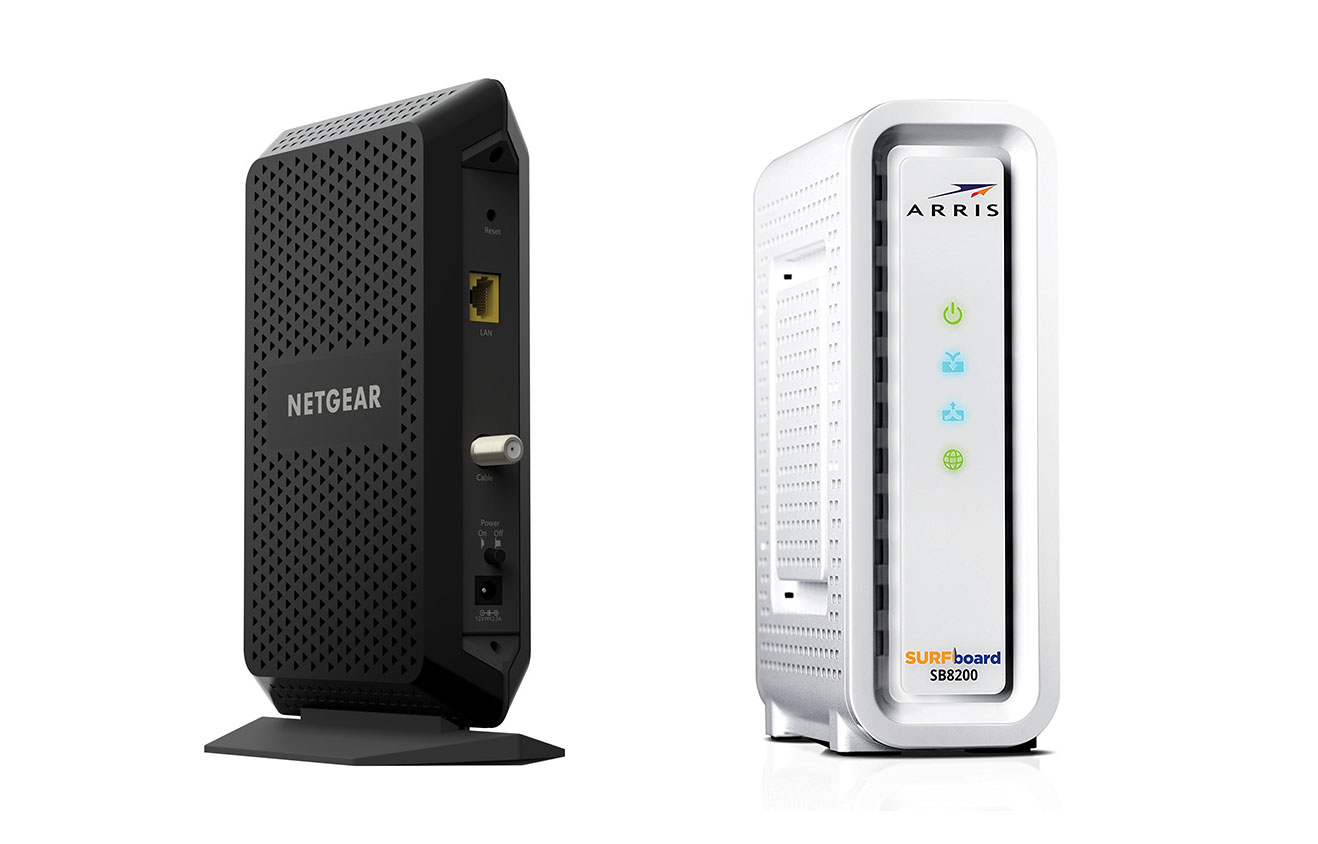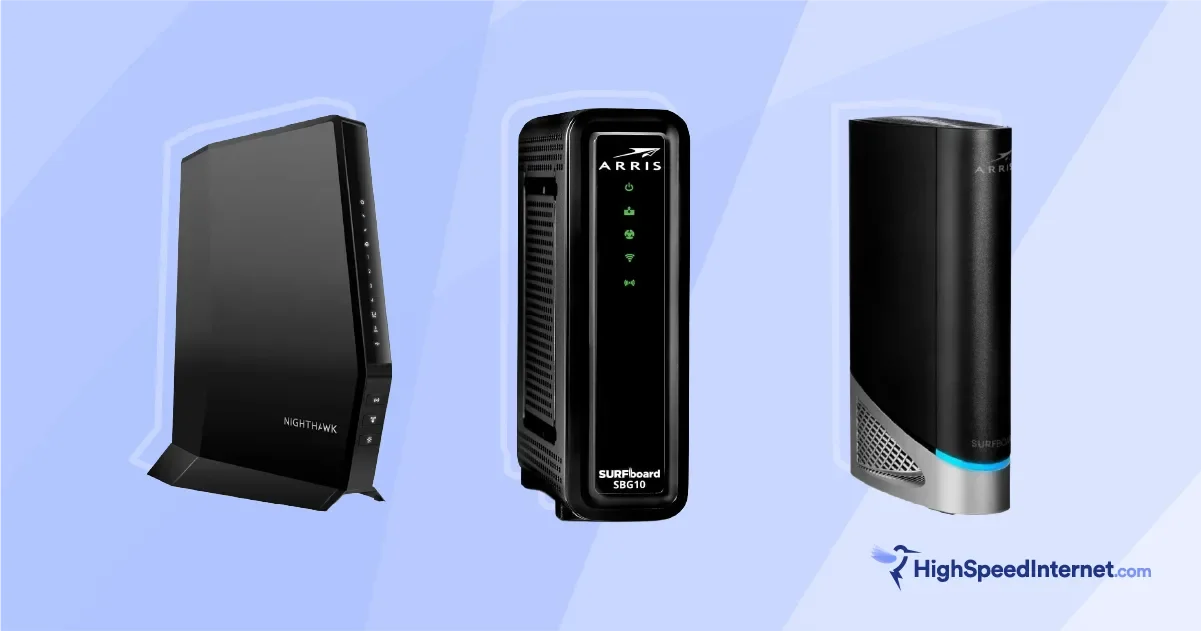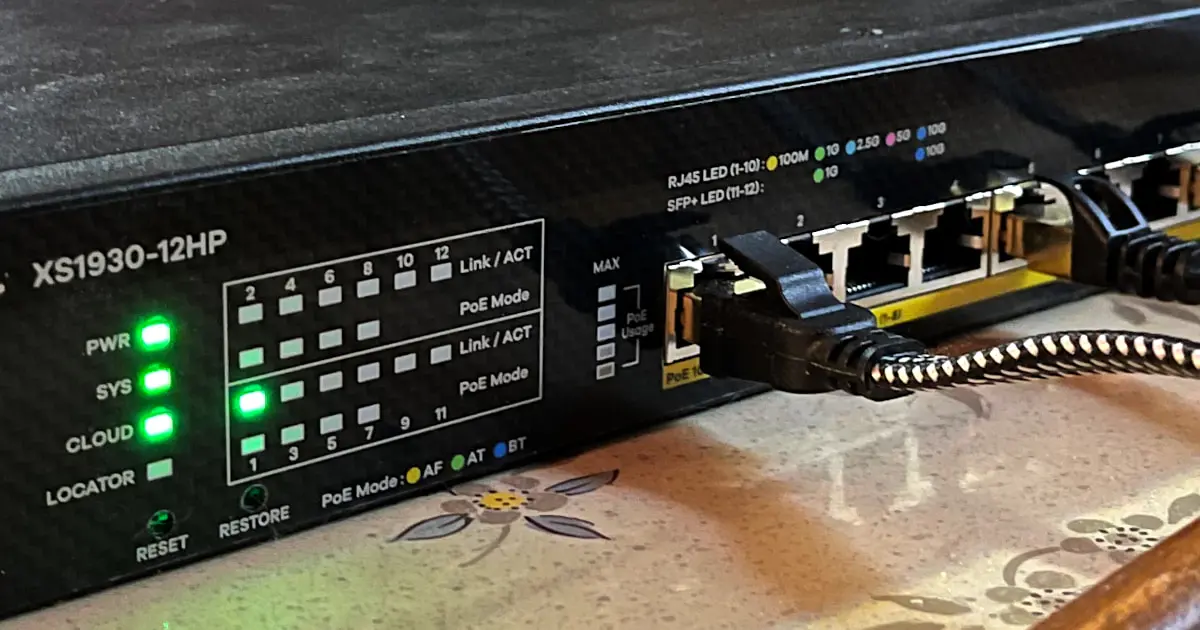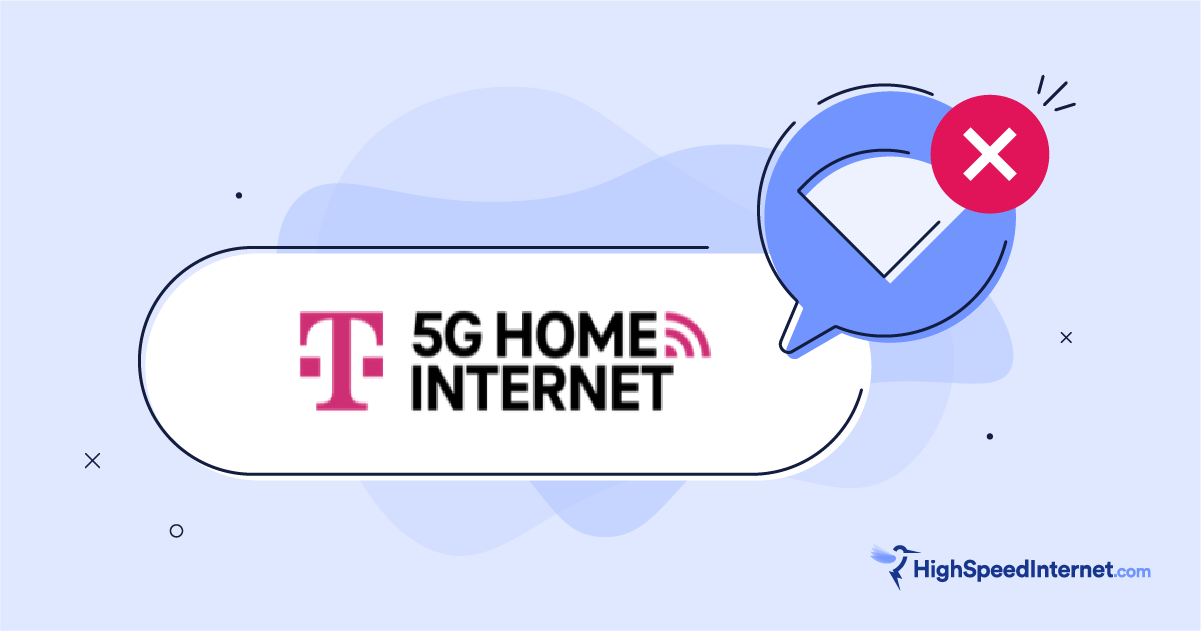What You Need to Install Fiber-Optic Internet
Your guide to getting your new connection set up
Sep 30, 2025 | Share
Equipment Guides
Fiber-optic internet connections are by far the fastest and most reliable type of internet connection you can choose, but getting those precious beams of internet light to your devices can be quite an ordeal. Usually setting up fiber internet requires a professional installation, but there are some parts of the process you can do yourself. For those taking their first steps into the world of fiber-optic internet—or those who are still considering it—here’s all you need to know.
How to self-install fiber
Since installing fiber most often requires laying a new cable and setting up specialized equipment, fiber providers typically do not give the option for you to self-install fiber internet. You must have a technician come to your home to set it up for you, which can be very expensive (though many fiber providers offer free professional installation). If your ISP doesn’t require a technician to set up your connection, these are the steps to self-install fiber internet:
- Locate your fiber network terminal.
- Connect the fiber terminal to the network box.
- Plug in your network box.
- Connect your device to the network box.
- Set up your home Wi-Fi network.
These steps are very similar to self-installing other types of internet, but with a few important differences. Let’s take a closer look at each one.
Locate your fiber network terminal
In order to install your own fiber internet, you first need to have an optical network terminal (ONT), also called a fiber network terminal or fiber jack, in your home connecting you to your provider’s network.
Unlike coax jacks or phone jacks, which are often plates installed flat against the walls, fiber terminals are typically bigger and blockier. They can range in size from just larger than a juice box to the size of a briefcase and are usually installed in out-of-the-way places like the corner of a room, inside a closet, or even out in the garage.
If you don’t have a terminal installed in your house, you’ll need a technician to come install one.
Safety tip
If your optical network terminal has loose fiber connectors, do not look into the end of the connector as this can cause eye damage. Refer to your terminal’s user manual to reconnect these cables properly.
Once you’ve found your terminal, make sure that the power light is on. If the light isn’t on, make sure the terminal is plugged in to a power outlet.
Connect the fiber terminal to the network box
The next step is to connect your network box or gateway to the terminal. Typically, this is done with an Ethernet cable, which should have been provided with the network box. Plug one end of the Ethernet cable into the port on the terminal, then plug the other end into the appropriate port on the network box. This is typically labeled “ONT” or “Fiber Jack.”
In some cases, particularly with larger terminals, the output of the terminal is wired to one or more jacks throughout the house. In this case, find an appropriate Ethernet jack (or in some cases, coax jack) inside the house and connect your network box to the jack.
Plug in your network box
Once your network box or gateway has been properly connected to your fiber terminal, connect the power cord to the network box and then plug it into a power outlet. As with a router, the lights should turn on and start blinking, eventually turning a solid color. This can take much longer for fiber service than other types of internet, sometimes up to 15 minutes.
If the lights on your network box are still blinking after 15 minutes, unplug the power, wait 30 seconds, and plug it back in. If it still doesn’t stop blinking after another 15 minutes, contact your internet service provider’s customer support.
Connect your device to the network box
Before you can set up your Wi-Fi network, you must connect a device to your network box or gateway. This can usually be done with a laptop, desktop, or even a phone.
Many network boxes will automatically create a default Wi-Fi network. The information on how to connect to this network is usually either printed on a sticker somewhere on the network box (often on the bottom) or in the manual.
If your box does not create a default Wi-Fi network during setup, you can connect directly with an Ethernet cable.
Set up your home Wi-Fi network
The final step in setting up your fiber internet is setting your home Wi-Fi network name and password.
If you need help setting up your home network, don’t worry. We have a step-by-step guide to help you through the process.
Why choose fiber?
So, why should you choose a fiber connection instead of cable or a wireless connection? There are a lot of benefits that fiber offers in addition to high speeds that other internet technologies can’t match. These include, symmetrical upload speeds, high reliability, and easy scalability.
Many cable plans have download speeds are roughly on par with gigabit fiber, but uploading on a cable connection reaches only a fraction of those speeds. Fiber, on the other hand, has symmetrical upload and download speeds. This means that if you can download at 1 Gbps, you can upload at 1 Gbps as well.
Most internet activities, like watching video, reading the news, or just web surfing, require very little upload speed, so download speed is the important factor. However, as more people start using the internet for video conferencing and livestreaming, upload speed becomes more important. Nothing comes close to fiber in terms of upload speed.
Fiber connections don’t just have the highest advertised speeds; they also maintain those speeds more reliably than other connections. This means that you don’t have to deal with slowdown from traffic or outages from old cables being replaced nearly as often as you would with cable or DSL.
Fiber infrastructure also comes with extra fibers in the cable that aren’t initially used. As the amount of internet traffic in an area increases, these “dark fibers” can simply be turned on to provide additional capacity, rather than having to dig up the cables and lay bigger ones.
All this means that choosing fiber is a good long-term internet solution for your household. I’ve switched providers plenty of times over the years, but after I got fiber, I never went back.
Why don’t I have fiber now?
Although fiber has many advantages over other types of internet, there are several challenges to widespread fiber reaching your home.
Is there a fiber provider in your area? Enter your zip code to find out.
Installation costs
While fiber-optic technology has been around since the 1960s, it’s still expensive to install. Much of this cost is simply digging the trenches to bury the cables underground. Digging a trench isn’t as big of a deal when you’re laying a major internet line to connect a city with millions of potential customers. Unfortunately, digging a trench to a small neighborhood or a single house gives a much smaller payoff to the provider. This is why the last mile of the network is often built with cheaper and less reliable technology.
Google Fiber attempted to overcome this problem by developing ”microtrenching” or “shallow trenching” methods, where instead of digging a deep, foot-wide trench, the company simply carved a narrow groove into a road, just wider than the cable and only a few inches deep.
Unfortunately, this experiment failed spectacularly, with cables becoming damaged and even popping up out of the road, tripping pedestrians in Louisville, Kentucky.1 These problems eventually caused Google Fiber to pull out of Louisville completely. Google also had to pay to repair all the roads damaged by the failed installation.
Short-term alternatives
Although fiber is currently the best long-term solution for residential internet, many other competing technologies offer connections that, while not as fast or reliable as fiber, are still enough to meet the immediate needs of most internet users.
While these alternatives make sense in the short-term, they can have serious consequences down the road. For example, after the bankruptcy of Frontier Communications, the company noted that one of the major factors that led to its bankruptcy was an underinvestment in fiber. The consequences of ignoring fiber shouldn’t have been a surprise since fiber has been the fastest and most reliable type of connection for decades. Rather, it was a choice by the company to focus on short-term goals instead of investing in the future.
Long-term roadblocks
Fiber is a good long-term investment, so it’s a popular choice for cities that want to invest in their own public broadband infrastructure. For example, in 2020, the city in the US with the fastest average internet speed was Cedar Falls, Iowa, whose municipal fiber network delivered speeds over five-times faster than the nearest commercial ISP.2
Unfortunately, municipal broadband is restricted or banned in nearly half of the US, so this kind of long-term investment often can’t be done by cities or counties.3 That means that it’s up to ISPs to build their infrastructures with an eye to the future.
This is also easier said than done. Just as ISPs have slowed or stopped the expansion of municipal broadband, ISPs often get in each other’s way as well. One of the reasons Google decided to gamble on their disastrous microtrenching experiment in Louisville is that AT&T sued the city and county to prevent Google using their utility poles.4 Although AT&T lost the lawsuit, it spoiled Google’s plans and, in the end, meant that Louisville didn’t get Google Fiber.
How to get fiber to your area
Fiber is amazing and fiber is everywhere, but most houses in the US aren’t set up to use it yet. That “last mile” between your house and the rest of the internet makes all the difference and the task of bridging that gap ranges from difficult to herculean. Still, everyone’s gotta start somewhere, right?
How to get fiber to my house
If a fiber provider is already in your neighborhood, you might be in luck. Running a cable from your house to the curb is the smallest investment an ISP would have to make to connect you to its network and will usually be covered by the installation fee.
If the network is still a few blocks away, some ISPs might be willing to run a cable to your house for a much higher installation fee, but usually you have to wait until its network makes its way to your block.
In either case, it’s a good idea to contact your local fiber provider. Even if they’re not willing to run a fiber cable to your house yet, at least they’ll know that there’s interest in your area when they start expanding their network.
How to get fiber to my neighborhood
Having a fiber network in your city is great, unless you happen to live on the opposite side of town where it’s not available. Then it’s just frustrating. Fortunately, ISPs don’t usually make the massive investment of a new fiber network just to get a tiny pocket of customers. They want to expand to wherever they can get the most customers, which usually involves close cooperation with local city governments.
One of the best ways to show an ISP that there is interest for fiber in a particular area is to go to town and community meetings and ask about fiber internet. Better yet, talk to your neighbors and get them all to come with you and you can all express your desire for fiber internet together.
Community council members can pass your interest along to the ISP or, in many cases, the ISP might have employees at the meeting. Google Fiber, for example, often sends employees to community council meetings in areas where it’s expanding its network to share information and generate interest. If you’ve already got the interest, half their work is done.
How to get fiber to my city
If there are no ISPs in your city offering fiber service, you’ve got quite the daunting task. Although some ISPs are expanding their fiber networks, others, like Google Fiber, have cut back or halted their expansion altogether.5 Does that mean that all hope is lost?
There is still one other option: municipal fiber. Although ISPs are more likely to build fiber infrastructure in larger cities first, any city can build a municipal fiber network with enough community support. Cedar Falls, Iowa, had a population just over 40,000 when it built its fiber network.6 Mapleton, Utah, a town with barely 10,000 residents, is currently building its own fiber network as a public utility.7, 15 These networks are often paid for by bonds, which also means that they don’t increase taxes or take funds away from other important programs.8
Building a municipal fiber infrastructure can also have additional benefits. In 2015, the White House commissioned a study into the effectiveness of community-based broadband solutions. This study found that municipal broadband not only created fast, cheap, and widely available internet connections but also brought commercial competition and private investment to underserved communities.9 In this way, municipal broadband creates more choices for consumers and drives economic growth.
Even in the most technologically developed areas, public investment in fiber is one of the best ways to lower costs and increase competition. New York City recently announced plans to build a city-wide municipal fiber network, focusing on the most poorly connected areas first.10
Fiber access isn’t only a solution for dense urban areas. It can also be done in rural areas. In January 2022, the small town of American Falls, Idaho, announced that it would soon be offering fiber internet to all residents, free of charge.14 Giving every home in the city fiber access will help to bridge the digital divide in this area, allowing residents the same opportunities available in urban areas.
Municipal fiber networks can also be the seeds of larger projects. It’s no surprise that when Google Fiber announced that West Des Moines, Iowa, would be its first new city after four years of inactivity, it chose a city that had already laid down its own fiber infrastructure.11 This isn’t a new trend, either. Provo, Utah, the third city in the US to get Google Fiber, was chosen because Google was able to take over the city’s existing municipal infrastructure.12
If you build it, they will come.
Where are fiber networks expanding?
Fiber-optic networks are expanding all across the US, especially in densely populated urban areas. Additionally, increased federal funding for high-speed internet expansion is helping to bring fiber connections to rural areas that have historically been underserved by major internet providers.
Google Fiber is also on the move again after announcing in 2021 that West Des Moines would be the first new Google Fiber city in several years.13 Google Fiber is also expanding in other areas like Salt Lake City, Utah; Omaha, Nebraska; Mesa, Arizona; and Austin, Texas.
In addition to Google Fiber, many large nationwide ISPs, especially those with aging DSL networks, are rapidly expanding their fiber coverage to keep up with demand from consumers. Many of these providers have also begun offering multigigabit connections as they race to be the provider with the highest residential fiber speeds.
With more people working and attending school from home than ever, the demand for fiber connections will continue to increase. This also means that you’re likely to see more and more fiber options in your area as ISPs try to fill these demands.
Fiber internet forever!
Fiber-optic internet has been around for almost 60 years, and although the digital landscape has changed dramatically, fiber won’t be going out of style anytime soon. It’s pretty hard to compete against the speed of light.
Fiber is the backbone of the internet. It offers the fastest, most reliable connection you can get and doesn’t cost any more than its nearest competitors. If you have the option to choose fiber, take it.
- Jon Brodkin, Ars Technica. “Google Fiber’s biggest failure: ISP will turn service off in Louisville” February 8, 2019. Accessed August 20, 2020.
- Eric Griffith, PC Mag. “The Fastest ISPs of 2020.” June 12, 2020. Accessed August 20, 2020.
- Eric Griffith, PC Mag. “Cheap and Fast Municipal ISPs Are Blocked in Almost Half of the US.” May 18, 2020. Accessed August 20, 2020.
- Jon Brodkin, Ars Technica. “AT&T admits defeat in lawsuit it filed to stall Google Fiber.” November 1, 2017. Accessed August 20, 2020.
- Brain Fung, The Washington Post. “Why Google Fiber is no longer rolling out to new cities.” October 26, 2016. Accessed August 20, 2020.
- Population of Cedar Falls, Iowa, in 2015 was estimated at 41,378. US Census Bureau. “Annual Estimates of the Resident Population for Incorporated Places in Iowa” Accessed August 20, 2020.
- Connor Richards, The Daily Herald. “Mapleton considering fiber internet, mayor says in State of the City Address.” March 13, 2020. Accessed August 20, 2020.
- Jon Brodkin, Ars Technica. “Where broadband is a utility, 100Mbps costs just $40 a month.” August 4, 2015. Accessed August 20, 2020.
- The Executive Office of the President. “Community-based Broadband Solutions: The Benefits of Competition and Choice for Community Development and High Speed Internet Access.” January 2015. Accessed August 20, 2020.
- Jon Brodkin, Ars Technica. “NYC broadband plan calls for fiber everywhere, with ISPs sharing network.” August 1, 2020. Accessed August 20, 2020.
- Abner Li, 9to5Google. “Google Fiber announces first new market in 4 years with public-private partnership.” July 6, 2020. Accessed August 20, 2020.
- Dave Smith, International Business Times. “Google Fiber In Utah: Why Provo Sold Its $39 Million Internet Service To Google For Just $1.” April 19, 2013. Accessed August 20, 2020.
- Google Fiber Blog, “Next Steps in West Des Moines” May 10, 2021. Accessed July 14, 2021.
- Kalama Hine, EastIdahoNews.com, “City of American Falls to Offer Free Fiber Internet Access to All Residents” January 19, 2022. Accessed January 20, 2022.
- Mapleton City Network, March 6, 2024. Accessed April 15, 2024.
Author - Peter Christiansen
Peter Christiansen writes about telecom policy, communications infrastructure, satellite internet, and rural connectivity for HighSpeedInternet.com. Peter holds a PhD in communication from the University of Utah and has been working in tech for over 15 years as a computer programmer, game developer, filmmaker, and writer. His writing has been praised by outlets like Wired, Digital Humanities Now, and the New Statesman.
Editor - Cara Haynes
Cara Haynes has been editing and writing in the digital space for seven years, and she's edited all things internet for HighSpeedInternet.com for five years. She graduated with a BA in English and a minor in editing from Brigham Young University. When she's not editing, she makes tech accessible through her freelance writing for brands like Pluralsight. She believes no one should feel lost in internet land and that a good internet connection significantly extends your life span.
